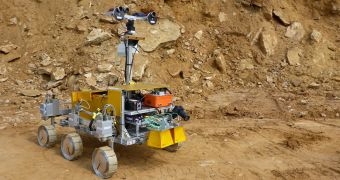NASA is not the only one preparing for Mars missions. ESA, the European Space Agency, is getting ready for a trial run of its upcoming ExoMars mission which will put a rover on the red planet. To prepare, both the ground team and the rover itself, ESA is conducting a desert test, a Sample Acquisition Field Experiment with a Rover, or SAFER, in one of the most inhospitable places on Earth.
A prototype rover will be set loose in the Atacama Desert in Chile, while operators back in the UK will be sending it navigational and exploration instructions. A time delay will be added, to make the simulation more real, and operators will have to plan for two Martian days, or sol, in one of our Earth days.
"For each sol they will first downlink data then prepare a set of commands for the next sol that the rover will then carry out on its own. The trial is intended to develop technologies and expertise for future Mars missions in general, but for added realism it is using ESA’s 2018 ExoMars rover as its 'reference mission'," ESA explained.
A prototype ExoMars rover will be used along with three prototype instruments, a panoramic camera for 3D imagery, a ground penetrating radar and another camera for close up imaging which can "see" to a resolution of down to a thousandth of a millimeter.
"For the first time with SAFER we will attempt to integrate data from surface and subsurface instruments to explore how to transition from topsoil to underground operations," Jorge Vago, an ExoMars project scientist, wrote.
“Since drilling plays an important role in the ExoMars rover’s search-for-life strategy, this is an important step. On Mars the best chances of accessing well-preserved molecular biosignatures deposited during the planet’s early, water-rich history lie in the subsurface, at depths below 1 m, where the topsoil provides shielding from cosmic radiation damage,” he added.

 14 DAY TRIAL //
14 DAY TRIAL //